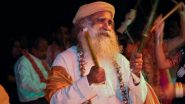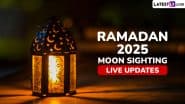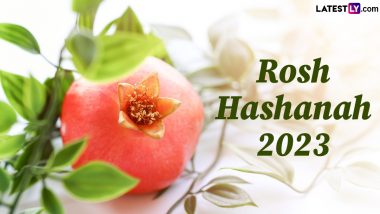Rosh Hashanah, also popularly known as the Jewish New Year, is celebrated with enthusiasm across the world. Rosh Hashanah, which means ‘Head of the Year’ in Hebrew, is celebrated for two days. According to the Jewish calendar, the Rosh Hashanah festival falls between September and October every year. It is observed on the first and second day of the seventh month of the Jewish religious year, Tishri. This year, Rosh Hashanah 2023 will begin on September 15, 2023, and will end on September 17, 2023. It is a significant and joyous holiday observed by Jewish communities around the world. As Rosh Hashanah 2023 nears, here are some customs, symbols, and traditions related to the Jewish festival. Rosh Hashanah 2023 Date, Origin, History, Traditions and Significance: All You Need To Know About the Jewish New Year.
Special Services in Synagogues
During the two days of the Rosh Hashanah festival, special Rosh Hashanah services are held in synagogues. The prayers emphasize themes of repentance, renewal, and the coronation of God as the King of the Universe.
Festive Meals
The Rosh Hashanah festival serves as an opportunity for people to unite with their families and friends and have a joyous time. Families and friends gather for special meals featuring symbolic foods and greet each other a ‘Shanah Tovah u'Metukah’, which means ‘A Good and Sweet Year’ in Hebrew.
Blowing of the Shofar
The famous ritual of Rosh Hashanah is the blowing of the shofar, a musical instrument made from an animal horn. The shofar is blown in a specific sequence of short and long blasts during synagogue services. The shofar serves as a wake-up call to self-reflection, repentance and a reminder of the importance of spiritual renewal.
Tashlich
Tashlich is a symbolic ritual performed on the afternoon of the first day of Rosh Hashanah. On the first day, people go to a body of water, symbolically casting away one's sins by throwing pieces of bread into the water.
Teshuvah
Teshuvah, which refers to reflecting and repentance, forms an important part of the festival. Rosh Hashanah is a time for introspection, seeking forgiveness from others and trying to become a better person for the years to come. Jewish tradition encourages repentance and making a sincere effort to improve oneself in the coming year.
Traditional Food
Food is the main focus of home celebrations of Rosh Hashanah across the world. Families and friends gather for sumptuous meals with traditional foods such as apples and challah dipped in honey. Honey, is a symbol of the wish for a sweet new year. Challah, normally braided, is baked round as a reminder of the never-ending cycle of life.
Mussaf Amidah Prayer
The Mussaf Amidah prayer on Rosh Hashanah is unique. Apart from the first and last three blessings, it contains three central blessings making a total of nine. These blessings are entitled ‘Malchuyot’ (Kingship, and also includes the blessing for the holiness of the day as is in a normal Mussaf), ‘Zichronot’ (Remembrance), and ‘Shofarot’ (concerning the shofar).
Erev Rosh Hashanah
The day before Rosh Hashanah day is known as Erev Rosh Hashanah (Rosh Hashanah eve). It is the 29th day of the Hebrew month of Elul, ending at sundown, when Rosh Hashanah commences. Some communities perform Hatarat nedarim (a nullification of vows) after the morning prayer services. Many Orthodox men immerse in a mikveh in honour of the coming day.
(The above story first appeared on LatestLY on Sep 15, 2023 08:00 AM IST. For more news and updates on politics, world, sports, entertainment and lifestyle, log on to our website latestly.com).













 Quickly
Quickly




















